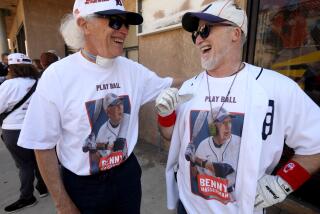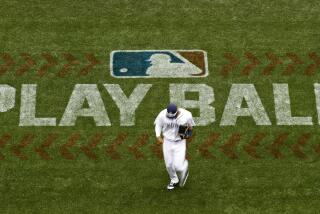Idyllic Cooperstown, N.Y., has much more than the baseball Hall of Fame
Nothing I had read about this famed village prepared me for such a Shangri-La.
The place is as lush as your lettuce bin and rests on the lower lip of a Dodger-blue lake graced with kayaks and canoes. Take away its vaunted National Baseball Hall of Fame and Museum, and you would still have an uncommonly alluring destination.
In winter, Cooperstown is as dormant as baseball itself. Come April, its rolling lawns and surrounding orchards bounce back to life.
Anglers ply Otsego Lake and hikers pick blueberries. There are craft breweries and little creeks on which to fly-fish.
Why you need a good five days to visit Cooperstown, N.Y.
But late September is perhaps its grandest season. With playoffs beckoning, baseball matters more now; the apples are ripe and summer crowds have fled.
Idyllic yet energized by a constant stream of baseball junkies, Cooperstown should be painted in pinstripes. James Fenimore Cooper’s father founded this village in 1786; about 50 years later, Abner Doubleday laid the groundwork for a promising new sport. In 1939, the museum opened.
Then, somehow, it’s as though time stopped. Thank the gods, sports and otherwise.
“Baseball is ballet without music,” sportscaster Ernie Harwell once said.
Cooperstown is one of its grandest stages, with activities — baseball and otherwise — as plentiful as the surrounding sugar maples that are beginning to show their fall colors.
Overjoyed, and a bit overwhelmed, in baseball’s Hall of Fame in Cooperstown, N.Y.
Strolling down Main Street here is like entering a Saturday Evening Post cover — with a few thousand other travelers.
Visitors pack the center of town in summer, less so now — all the more reason for an autumn trip. Still, even on Baseball Hall of Fame induction week in late July, the place was manageable. And it’s all right here on Main: the museum, the restaurants and a $2 trolley to get you around.
Of course, there are memorabilia shops galore: trading cards, pins, custom-made bats. At the end of Main is the National Baseball Hall of Fame and Museum, seemingly 90 feet from everything.
Among the must-sees is the gallery where Jackie Robinson’s award resides with those of Sandy Koufax and Ernie Banks. As of late this summer, a little more than 18,000 men had played in the major leagues. Of those, a mere 1% have made it here to the Hall of Fame.
If you’re a hard-core fan, expect to spend a full day in the museum, maybe more. Sometimes the three floors of memorabilia and displays seem too much to take in. But ask yourself: “What would you remove? The fingerless gloves from the early days? The oil painting of the first game played under lights?”
I lingered an hour over the replica lockers from the various teams. But the thing I’ll remember most is old scouting reports. For Derek Jeter, a scout wrote this valentine: “Perfect shortstop body … has natural flowing movements … this guy is special.”
For Hanley Ramirez, this fortune-cookie prediction: “Tends to be lazy.”
Twitter: @erskinetimes
ALSO:
Which Chicago hot dog spot is your favorite? Here’s a list to bite into
For a weekend getaway with a touch of culture, head to Tubac, Ariz., where art reigns supreme
At Denali National Park, sled dogs are truly rangers’ best friends
More to Read
Sign up for The Wild
We’ll help you find the best places to hike, bike and run, as well as the perfect silent spots for meditation and yoga.
You may occasionally receive promotional content from the Los Angeles Times.







